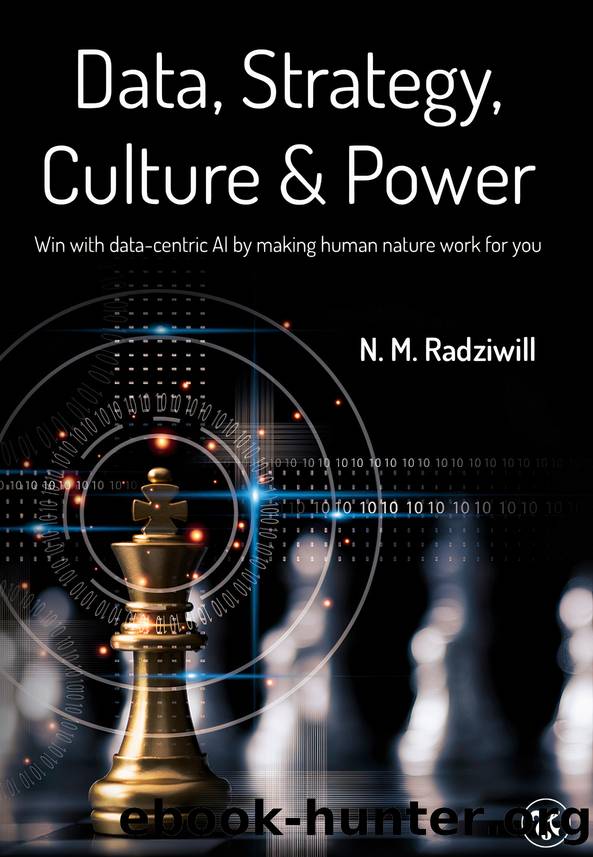Data, Strategy, Culture & Power: Win with Data-Centric AI by making human nature work for you by Benton Morgan & Radziwill Nicole

Author:Benton, Morgan & Radziwill, Nicole
Language: eng
Format: epub
Publisher: Lapis Lucera
Published: 2024-05-15T00:00:00+00:00
IS SOME DATA BETTER THAN NO DATA?
I was particularly surprised to see Scientific American blaming a glut of UFO reports on âbad dataâ so prominently, right in the title of its article. NASAâs own UAP team, in its FAQ, firmly placed the blame on limited data, though, not bad data: âMost UAP sightings result in very limited data, making it difficult to draw scientific conclusions about the nature of UAP.â After all, most of the observations the Director of National Intelligence receives are verbal descriptions of a sighting, metadata about the sighting (like time, place, and direction of view), and sometimes photos or videos from a mobile phone.
Having a little bit of data is not the same problem, and often not as significant a problem, as having bad data in any volume. We can use small samples of data to support inferences about the physical phenomena weâre observing, and as long as the data is reasonably good, our findings may be realistic. We may not be confident about our conclusions, but conclusions can be drawn. In contrast, when data is bad, insights made using that data could only be valid by chance.
In the case of the mysterious flying objects, more and better data are needed. On May 31, 2023, NASAâs UAP panel provided an update to reinforce this message. Chair David Spergel, President of the Simons Foundation, explained their rather ordinary initial findings: âTodayâs existing data and eyewitness reports are insufficient to yield conclusive evidence about the nature and origin of every UAP event, he said, primarily because of a lack of quality control and poor data curation.â Simply put, NASA has no way of knowing whether the people and instruments generating the data are trustworthy, and the data they receive canât be expected to come from collections that are systematically organized and maintained.
The Scientific American article also calls out the critical need for making sure people interpreting data use the same terminology to understand that data. In the case of the UAPs, determining what is (and is not) anomalous requires knowing what anomalous even means: âGaining any new clarity about surging reports of unidentified anomalous phenomena, or UAP, will take time, better data gathering and diagnostic tools and, perhaps most importantly, a hale and hearty dose of nit-picking scientific scrutiny. It may also require a better, sharper definition of what âanomalousâ even means in the context of recent sightings.â
While youâll hear people say âsome data is better than no data,â in reality, a limited amount of data may either prove useless or misleading. Think about the years of photographs of the Loch Ness Monster, or the grainy images and videos of Bigfoot that inspired curiosity, wonder, and conspiracy theories. Has limited data been useful in these contexts? It hasnât been useful in supporting or denying the existence of the creatures, but it has been useful to catalyze fear and inspiration. Only time will reveal whether the phenomena are real or imagined. It takes reflection, scrutiny, multiple observers and multiple observations to convert data to the information and insights people broadly trust.
Download
This site does not store any files on its server. We only index and link to content provided by other sites. Please contact the content providers to delete copyright contents if any and email us, we'll remove relevant links or contents immediately.
Hit Refresh by Satya Nadella(9038)
The Compound Effect by Darren Hardy(8808)
Change Your Questions, Change Your Life by Marilee Adams(7635)
Nudge - Improving Decisions about Health, Wealth, and Happiness by Thaler Sunstein(7615)
The Black Swan by Nassim Nicholas Taleb(7010)
Deep Work by Cal Newport(6879)
Daring Greatly by Brene Brown(6444)
Rich Dad Poor Dad by Robert T. Kiyosaki(6401)
Principles: Life and Work by Ray Dalio(6209)
Man-made Catastrophes and Risk Information Concealment by Dmitry Chernov & Didier Sornette(5921)
Playing to Win_ How Strategy Really Works by A.G. Lafley & Roger L. Martin(5917)
Digital Minimalism by Cal Newport;(5663)
Big Magic: Creative Living Beyond Fear by Elizabeth Gilbert(5610)
The Myth of the Strong Leader by Archie Brown(5425)
The Slight Edge by Jeff Olson(5346)
Discipline Equals Freedom by Jocko Willink(5285)
The Motivation Myth by Jeff Haden(5156)
Stone's Rules by Roger Stone(5026)
The Laws of Human Nature by Robert Greene(4997)
